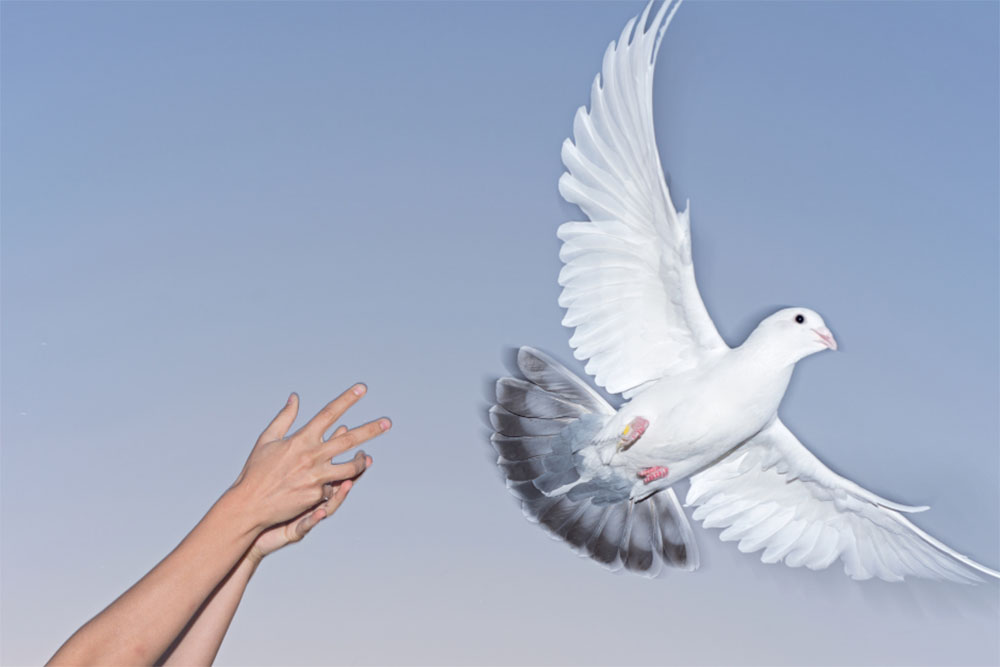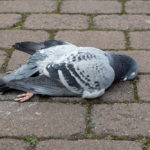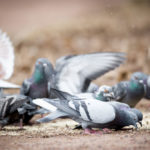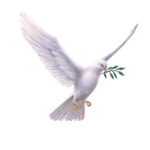Regardless of how ceremonious and romantic they may appear in movies and on TV – Dove releases are cruel to animals.
Abandoning your pet dog in the middle of nowhere then speeding away, allowing a defenceless animal to fend on its own, is practically the same as releasing a bird that has no skills to use in the wilderness.

It’s pointless to release animals into places where they won’t be able to live.
Allowing animals who have been reliant on people to fend for themselves in the wilderness is plain unethical and cruel.
What Is Meant By A “Dove Release”?
A dove release loosely refers to the releasing of multiple doves or other white birds into the sky, usually for the purpose of commemorating a specific event or milestone, or simultaneously as a symbol of peace.
If you haven’t witnessed a dove release in real life, you’ve almost certainly seen one in movies and tv shows, which doesn’t help the situation as it usually makes it look effortless and beautiful – but the truth is much darker.
The most popular events for dove releasing include weddings, funerals, religious ceremonies, memorial services, and christenings.
Pope Francis, head of the Catholic Church, has been known to take part in dove releases at public gatherings and events.
There’s no set amount of birds that need to be released in order for it to constitute a “dove release.” It can be anything from one solitary bird, to hundreds of them.
The whole act usually only lasts a few seconds, and is often followed by an audible gasp or cheer from onlookers.
After which, it’s assumed that the birds safely make their way back to their home base without any issues.
While this is often the intention and under the right care and supervision the birds can make it home safely, it often doesn’t happen this way.
Are Dove Releases Always Bad?
Unfortunately, dove releases are rarely a good thing.
When a dove release is not conducted in an acceptable or appropriate way, the following are some of the most likely problems that can occur.
They Don’t Have The Skills To Survive
There are no pure white doves in nature, according to National Geographic. White doves have been domesticated and bred for centuries.
White doves, like other species, are traded without the ability to survive.
Since white doves are group creatures, they have a slim chance of surviving under their own judgement when released at weddings or other events.
To put it another way, releasing a white dove into the sky after having spent their entire adult lives imprisoned in a box is just the same as leaving a family dog in the forest miles from home – it can be considered cruel.
Furthermore, the doves are perplexed by the release. Doves are diurnal, which means they are most active during the day, thus releasing them at night puts them at a disadvantage.
The doves vanish into the darkness, leaving them on their own at dawn. They won’t live unless they can find a group of pigeons or other birds to join.
Even if they do locate a bird community to join, the doves will remain disoriented, making them easy prey for predators like hawks.
They’re Vulnerable To Predator Attacks
There will always be bigger, more hostile, more ‘streetwise’ birds around the corner in city environments, posing a serious threat to any tamed dove released in the neighbourhood.
People have been known to release birds at events only to have them killed by ravens, seagulls, and other birds once they are out in the air.
A tamed dove will have no hope against wild pigeon predators, and their evolutionary design leaves them with few (if any) actual weapons with which to fight themselves.
Some Birds Will Never Make It Back
While the majority of released doves will be capable of navigating their way home safely because they have been instructed, the truth is that at least a portion of the group will not make it back in one piece, if at all.

If you release a bunch of birds beyond where they were bred, particularly in the urban context, they are likely to have difficulties finding their way back.
It may provide for a pleasant experience and attractive photographs at the time of release, but what you don’t see afterward are birds attempting to acclimate to the surroundings and getting agitated.
They Require Experienced Handlers
While we do not suggest engaging in a dove release celebration, we will add that if you are dead set on doing so, you must hire a professional to assist you.
You’d be surprised at the number of people who believe they can buy a bunch of birds and unleash them into the environment with no repercussions.
They frequently make the error of using the wrong types of birds. Ringneck doves and King pigeons may appear to be ideal for a release ritual, but they lack the necessary homing capabilities to return to safety.
The basic conclusion is that releasing the wrong kinds of birds into the wild will leave them unable to fend for themselves, and they will almost certainly perish in a new habitat.
Can A Dove Release Ever Be Considered Ethical?
The world is becoming increasingly sensitive and responsive to the use of animals for sport, and dove releases are yet another example of an activity which can no longer be excused morally and ethically.
You would also not want to go to a carnival or circus event where there are appealing, thrilling animals on show, but you understand there’s a good possibility they’ll be injured, lost, or killed just after the performance.
Well, dove releases cross some of these boundaries – so why should it continue to be supported and endorsed?
On the surface, they appear to be a benign, tranquil, and attractive ceremony event, but the truth for the animals is much grimmer.
Sadly, we all know when it comes to animal safety and treatment, not everyone on the planet has the same sense of morality and sensibilities.
There will always be people and organizations who want to do a dove release irrespective of the harmful effects it can have on the birds, but we believe it is worthwhile if our post can encourage even a few people who were intending to do so to reconsider.
Are There Any Ethical Alternatives To Dove Releases?
These birds, like all creatures, prefer to live peacefully rather than being compelled to be a symbol of peace.
There are numerous cruelty-free alternatives to choose from if you want to host a humane wedding ceremony or celebratory event that does not involve the release of live animals.
Selecting an animal shelter or sanctuary as your wedding site is not only a great and humane way to celebrate love, but it also allows you to educate your guests about creatures they may have never met before.
Instead of engaging in the horrible practise of “dove release,” you and your guests will be able to admire the beautiful animals spending their lives in peace.
What Type Of Doves Are Used In A Dove Release?
While “dove” releases are advertised at numerous festivals, no ethical organization would release an actual dove. A true dove is lighter, has a weaker flight, and lacks a homing sense.
A dove release containing representatives of the species Streptopelia risoria could be considered cruel. White homing pigeons are a subspecies of Columba livia domestica, which is related to doves.
They are significantly bigger, have the ability to homing, and are better flyers.
White doves are rarely seen in the open in the United States, and if you do spot one outside, it is most probably an escaped pet or a victim of a dove releasing.
Since white doves really aren’t wild creatures, they lack the skills required to survive in the wild.
Because they lack any migrating tendencies, they are vulnerable to exposure, unable to defend themselves from predators, and therefore unable to collect food for themselves.
If you release a white dove, or any other domesticated animal, into the wild, you are putting their lives in jeopardy by exposing them to situations in which they lack the abilities to survive.
When it relates to “professional” dove release, , the usage of genuine doves is much less common.
While white ringneck doves are sometimes used in DIY dove releases, white homing pigeons are more commonly used by organisations for rent in this activity.
This pigeon species is recognised for its ability to navigate great distances and make its way back.
Notwithstanding this, homing pigeons are still a domesticated species of bird, and their reintroduction into the wild poses a threat.
Homing pigeons are not adapted to severe conditions and will still be exposed to the outdoors. Larger birds find them easy prey, posing further risks.
Final Thoughts
Speaking out against ceremonial dove releases can help a bird in need, check with your local animal sanctuary to see if any feathery companions are currently being housed.
Pigeons and doves that have survived dove releases can often be seen in bird sanctuaries..






